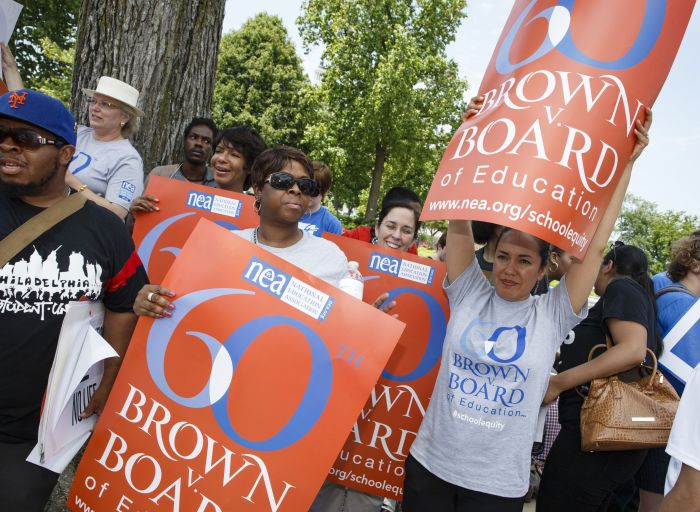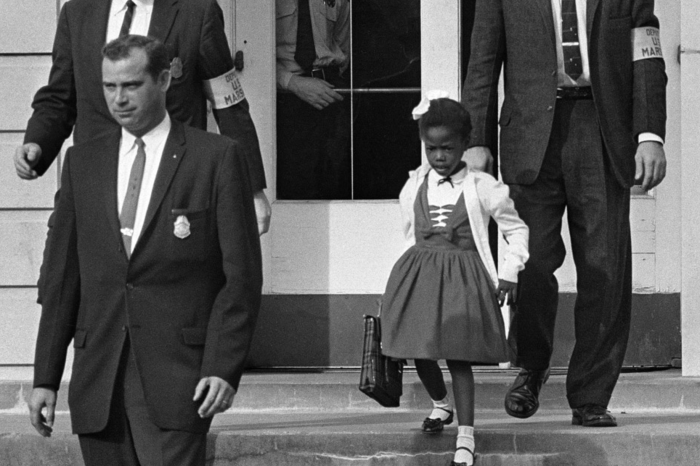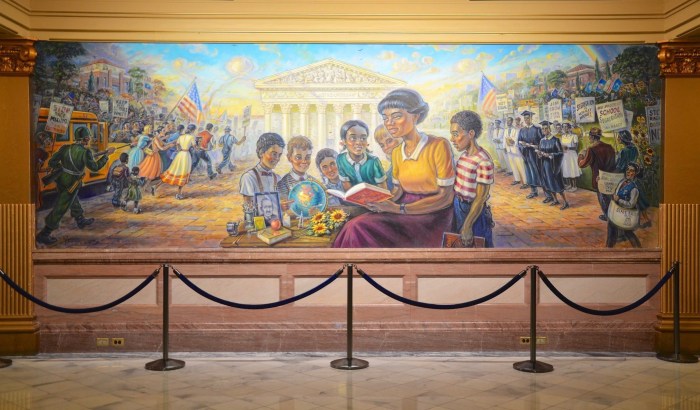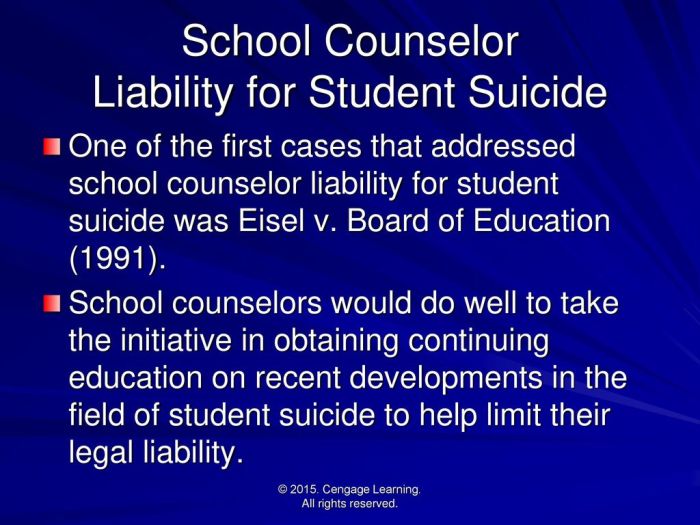Eisel v board of education – Step into the captivating world of Eisele v. Board of Education, a landmark case that ignited a national debate on the intricate interplay between freedom of speech, religious expression, and the authority of public schools. Join us as we delve into the legal complexities and broader societal implications that shaped this pivotal moment in American jurisprudence.
The Eisele v. Board of Education case emerged from a clash between a teacher’s religious beliefs and the authority of a school board, setting the stage for a profound examination of the delicate balance between individual rights and institutional control.
Legal Basis and Precedent
The legal basis for the Eisele v. Board of Education case lies in the First Amendment to the United States Constitution, which prohibits the government from establishing religion. In this case, the plaintiffs argued that the school district’s policy of allowing student-led prayer at football games violated this prohibition.The
Supreme Court has ruled on several cases involving the separation of church and state in public schools. In Engel v. Vitale (1962), the Court struck down a state law requiring the recitation of a prayer in public schools. In Abington School District v.
Schempp (1963), the Court extended this ruling to prohibit the reading of the Bible and the recitation of the Lord’s Prayer in public schools.In the Eisele case, the plaintiffs argued that the school district’s policy of allowing student-led prayer at football games was unconstitutional because it had the effect of endorsing religion.
The school district argued that the policy was constitutional because it was not coercive and did not involve the government in religious activity.
Freedom of Speech and Religious Expression

The First Amendment of the United States Constitution guarantees the freedoms of speech and religion. These protections extend to public school students, who have the right to express their beliefs and practices, subject to certain limitations.In the case of Eisel v. Board of Education, the Supreme Court held that a public school’s decision to remove a student’s religious banner from a school hallway violated the student’s First Amendment rights.
The Court found that the banner was a form of protected speech and that the school had not shown that it had a compelling interest in removing it.The First Amendment’s protections for freedom of speech and religious expression are essential to a free and democratic society.
These protections allow individuals to express their beliefs and ideas, even if they are unpopular or offensive. They also protect individuals from being discriminated against because of their religious beliefs.However, these rights are not absolute. The government may restrict speech or religious expression if it has a compelling interest in doing so.
For example, the government may restrict speech that is likely to incite violence or that is defamatory. The government may also restrict religious expression that is likely to disrupt public order or that poses a threat to public safety.In the case of Eisel v. Board of Education, the Court found that the school did not have a compelling interest in removing the student’s banner.
The banner was not likely to incite violence or disrupt public order. It was simply a statement of the student’s religious beliefs. The Court held that the school’s removal of the banner violated the student’s First Amendment rights.The Eiselcase is an important precedent for protecting the First Amendment rights of students.
It holds that schools cannot censor student speech or religious expression unless they have a compelling interest in doing so. This decision helps to ensure that students have the freedom to express their beliefs and ideas, even if they are unpopular or offensive.
Teacher’s Rights and School Authority
In public schools, teachers hold significant responsibilities in educating students while adhering to established regulations. School boards possess the authority to govern teacher conduct, but this authority must be balanced with the autonomy teachers require to fulfill their roles effectively.
Teacher’s Rights
- Academic Freedom:Teachers have the right to exercise professional judgment in selecting teaching methods and materials, subject to school district policies and curriculum guidelines.
- Free Speech:Teachers enjoy First Amendment protection for their speech, but this right is not absolute and may be limited by school district policies to maintain order and prevent disruption.
- Due Process:Teachers are entitled to fair treatment and due process before any disciplinary action is taken against them.
School Authority, Eisel v board of education
- Curriculum and Instruction:School boards have the authority to establish curriculum standards and guidelines that teachers must follow.
- Student Discipline:School boards are responsible for maintaining order and discipline in schools, and teachers are expected to cooperate with school administrators in enforcing school rules.
- Teacher Conduct:School boards have the authority to regulate teacher conduct, including dress code, classroom management, and ethical behavior.
Balancing Autonomy and Authority
The balance between teacher autonomy and school authority is crucial for effective education. Teachers need sufficient autonomy to exercise their professional judgment and foster student learning, while school boards must ensure that teachers are accountable for their actions and adhere to district policies.
Impact on Public Education

The Eisele v. Board of Education decision has far-reaching implications for public education in the United States. It raises important questions about the role of religion in public schools and the limits of teacher authority.
One of the most significant potential effects of the decision is on teacher-student relationships. When teachers are allowed to express their religious beliefs in the classroom, it can create an atmosphere of favoritism or discrimination. Students who do not share the teacher’s beliefs may feel uncomfortable or marginalized.
This can make it difficult for students to learn and can damage the trust between teachers and students.
The decision could also have a broader impact on the curriculum and school culture. If teachers are allowed to teach their religious beliefs as fact, it could lead to a narrowing of the curriculum and a suppression of dissenting viewpoints.
This could have a negative impact on students’ critical thinking skills and their ability to understand the world around them.
Comparative Analysis

To gain a comprehensive understanding of the legal landscape surrounding freedom of speech and religious expression in public schools, it is beneficial to examine similar cases that have been adjudicated in the past.
Comparative analysis of such cases can shed light on the similarities and differences in legal reasoning and outcomes, as well as reveal any trends or patterns that may emerge.
Case Comparisons
- Epperson v. Arkansas (1968): In this case, the Supreme Court struck down a state law that prohibited the teaching of evolution in public schools. The Court held that the law violated the Establishment Clause of the First Amendment because it endorsed a particular religious view.
- Edwards v. Aguillard (1987): The Supreme Court struck down a Louisiana law that required public schools to teach creation science alongside evolution. The Court held that the law was motivated by a religious purpose and violated the Establishment Clause.
- Santa Fe Independent School District v. Doe (2000): The Supreme Court struck down a school district’s policy that allowed student-led prayers at football games. The Court held that the policy violated the Establishment Clause because it endorsed religion.
Similarities and Differences
These cases share several similarities. First, they all involved challenges to laws or policies that restricted freedom of speech or religious expression in public schools. Second, in each case, the Supreme Court held that the law or policy violated the Establishment Clause of the First Amendment.
However, there are also some differences between these cases. For example, in Epperson, the law prohibited the teaching of evolution, while in Edwards, the law required the teaching of creation science. Additionally, in Santa Fe, the policy allowed student-led prayers, while in the other cases, the laws or policies were more directly related to the teaching of religion.
The case of Eisel v. Board of Education raised significant questions about the separation of church and state in public schools. For a deeper dive into this topic and related historical events, check out Fiveable AP World Unit 6 . The case’s outcome continues to shape the ongoing debate over the role of religion in public education.
Trends and Patterns
These cases suggest that the Supreme Court is reluctant to allow laws or policies that restrict freedom of speech or religious expression in public schools. The Court has held that such laws or policies violate the Establishment Clause of the First Amendment because they endorse religion.
This trend is likely to continue in the future. As the Supreme Court becomes more protective of religious freedom, it is likely to strike down laws or policies that restrict religious expression in public schools.
Historical Context

The Eisele v. Board of Education case emerged amidst a period of significant social and political upheaval in the United States. The 1960s and 1970s witnessed the rise of the civil rights movement, the Vietnam War, and the counterculture revolution.
These events fostered a climate of questioning authority and challenging traditional values, which extended to the realm of education. Students and teachers alike began to push for greater autonomy and freedom of expression within the school system.
Legal Challenges to School Authority
The Eisele case was part of a broader trend of legal challenges to the authority of school boards and administrators. In the years leading up to the case, several Supreme Court decisions had expanded the rights of students and teachers to express themselves freely in schools.
These decisions included Tinker v. Des Moines Independent Community School District (1969), which held that students have a right to wear armbands protesting the Vietnam War, and Papish v. Board of Curators of the University of Missouri (1973), which struck down a university’s ban on political speech on campus.
Helpful Answers: Eisel V Board Of Education
What was the central issue in Eisele v. Board of Education?
The case centered on the conflict between a teacher’s right to express religious beliefs in the classroom and the school board’s authority to regulate teacher conduct.
How did the Supreme Court rule in Eisele v. Board of Education?
The Court ruled in favor of the school board, holding that the school district had a legitimate interest in maintaining a secular environment in public schools and that the teacher’s actions had disrupted the educational process.